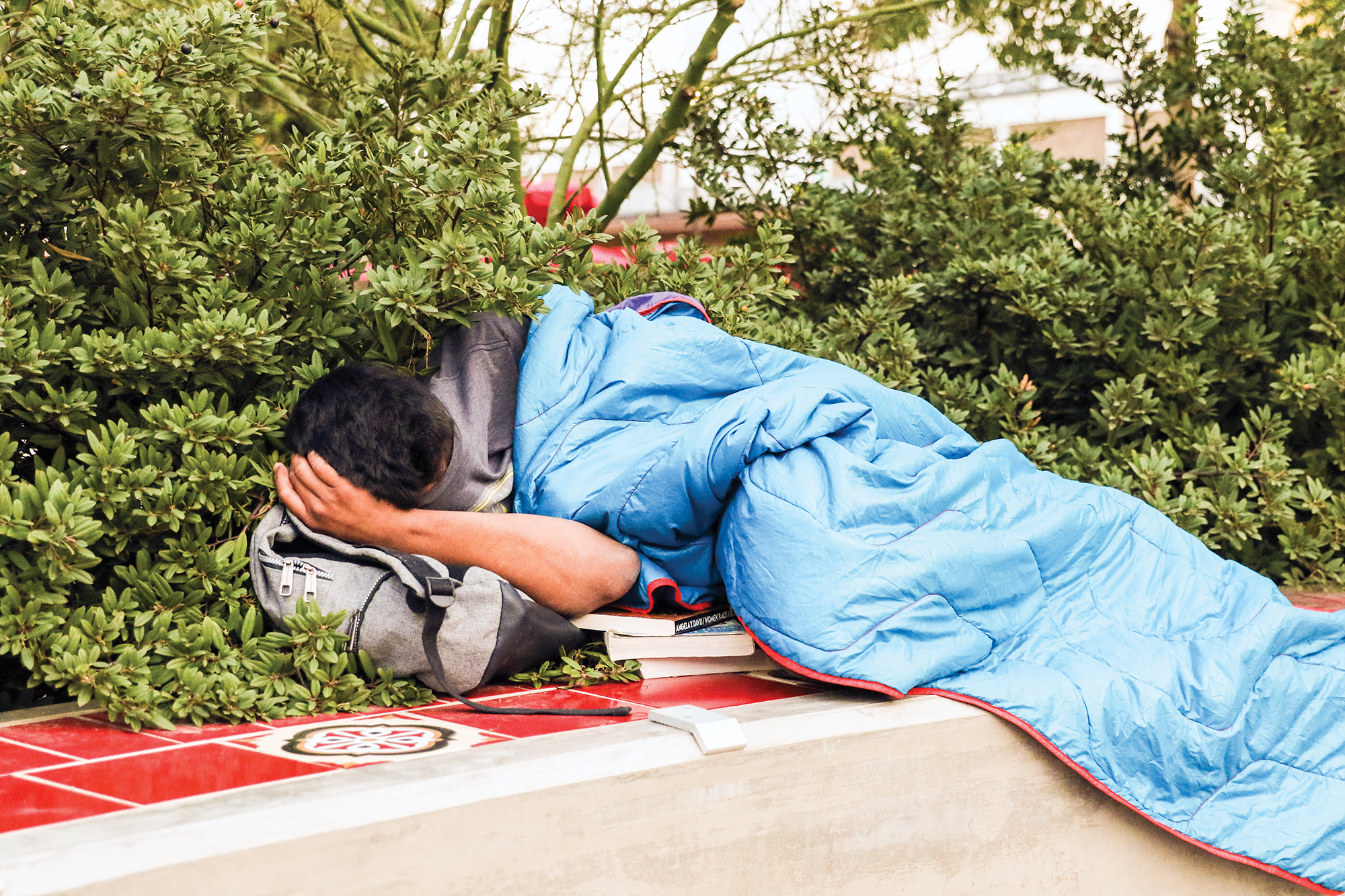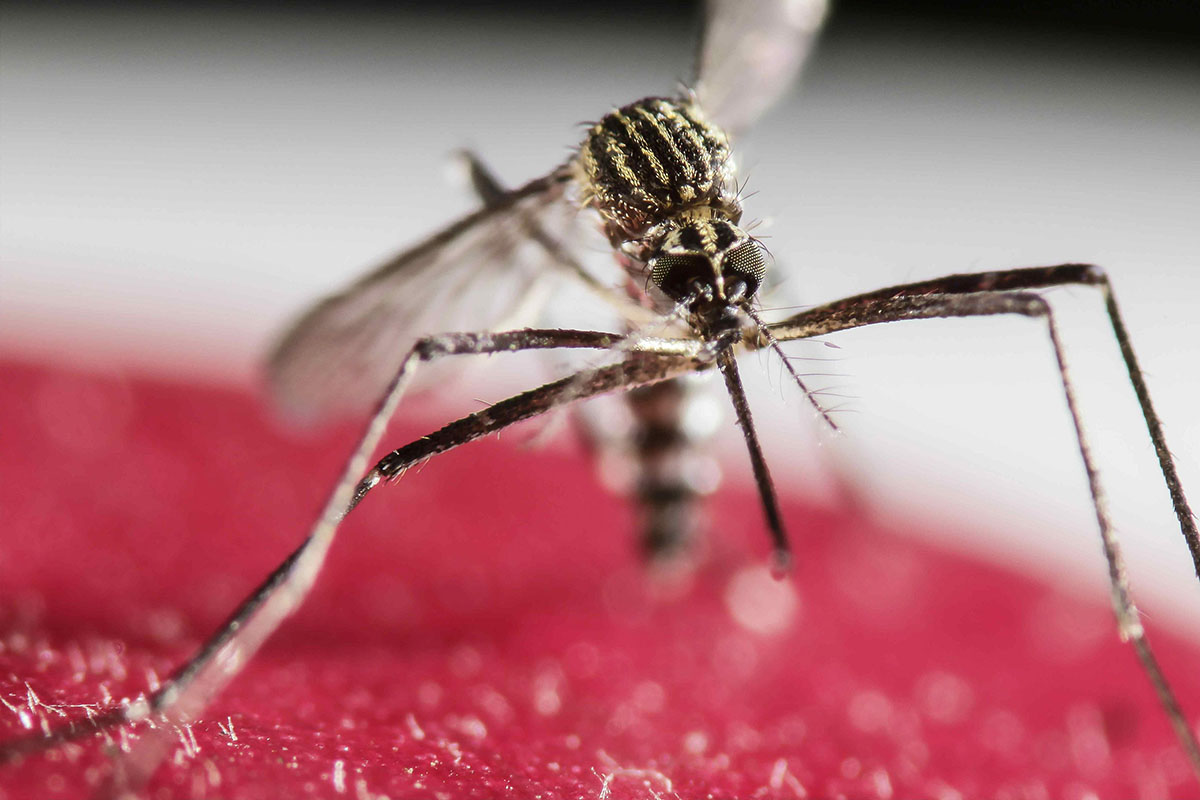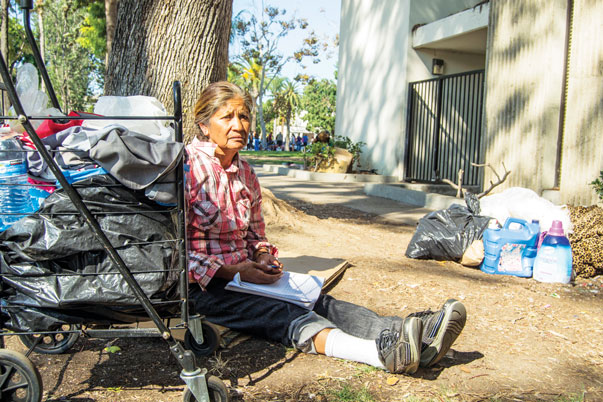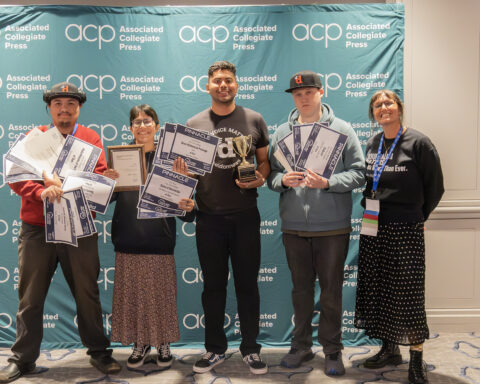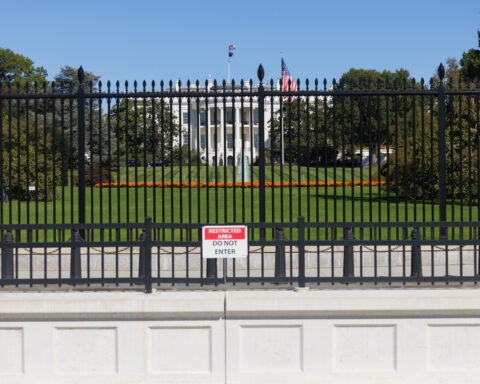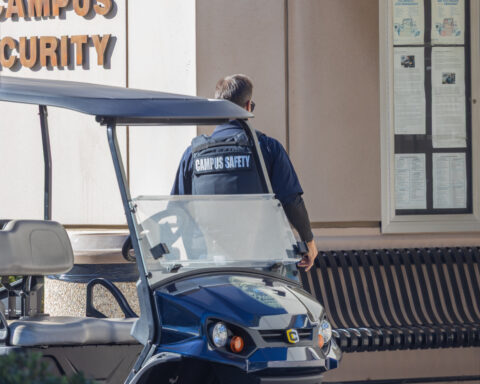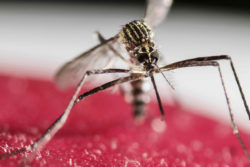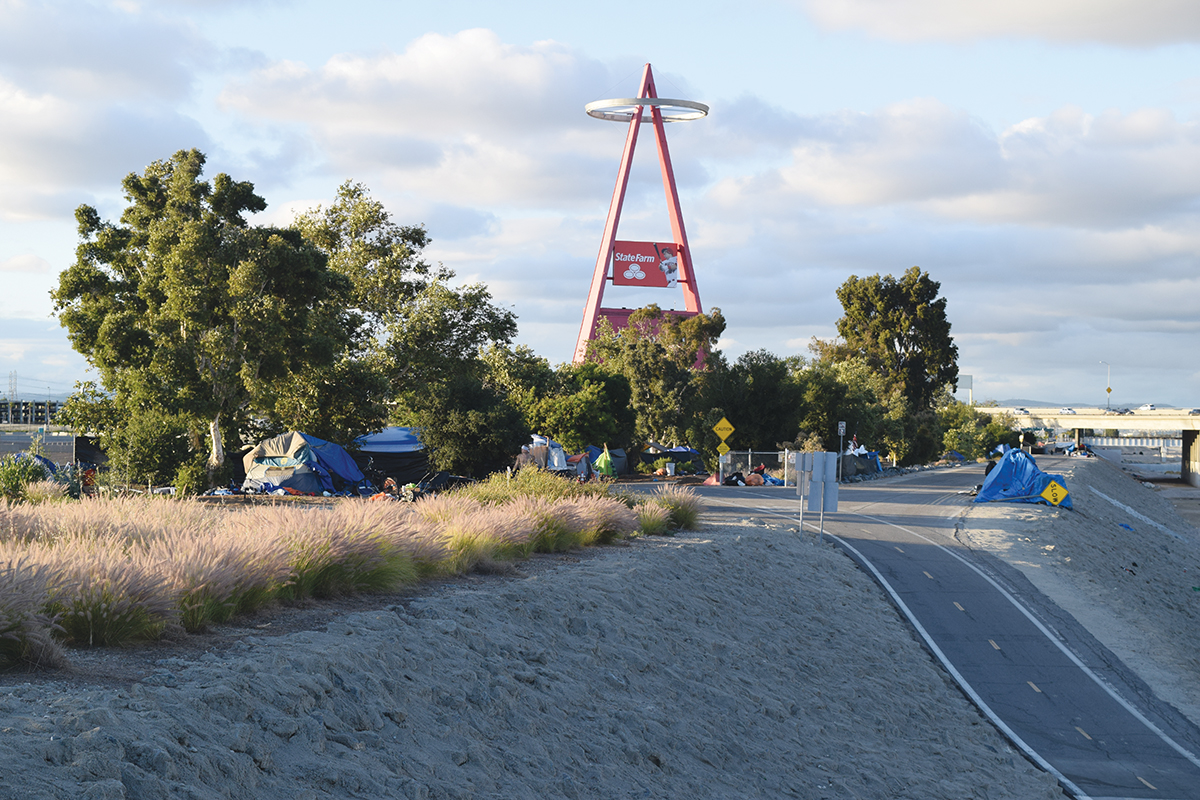
She lived in the shadow of the Angel Stadium’s “A,” her encampment weaved within the web of Orange County’s concrete jungle. Along the Santa Ana river bed, with her back hunched and knees bent, 23-year-old Ashley digs her feet into the scorched earth – the charred remains of a fire that decimated her belongings into a billowing tower of smoke. In the two years she was homeless by the river bed, this was not the first time she lost everything. The first time was in the winter, where the jaws of sweeping floods swallowed her possessions into a watery abyss. Now Ashley claws at the earth, her bony fingers caked in dirt from clearing the fire’s remains, so she can move back with her precious blue-nose pitbull. “I lost everything. I actually risked burning my face off getting my tent. The fire got some of my hair, and my face was red after. Someone pulled me away,” Ashley said.
Homelessness in Orange County has been growing over the past few years, with hundreds residing along the Santa Ana River fearing for their future. The encampment, which has as many as 500 inhabitants, stretches along the bike trail, with the majority of residences sitting between Chapman Ave to Katella Ave. The strip forms what people are calling “skid row.” Once a simple mass of tents and makeshift homes, skid river has evolved into a sprawling community of residents like Ashley who are familiar with a life of disaster.
Homeless residents were forced to abandon the east bank, south of the Angel Stadium area, because sand and boulders are now stored on the property in-between Chapman and Orangewood avenues. According to OC Public Works, living on the edge of the river is not safe.
Michael, whose parents have been living in the encampment for the last three years, explains the unfortunate decisions the county has made.“What bothered me was the rock storage,” Michael said, describing how he felt the City of Orange valued rock storage more than people’s homes. He explains how these tents are people’s homes filled with their belongings and kicking them out is insulting.
“Society just says, ’Screw you animals, you all deserve what you get.’ That’s not true for a lot of people. Life happens. You get down to this point, you can imagine the self esteem,” said Patrick, a visitor to the Santa Ana river and a Santa Ana College alumni from the 1980s. Patrick, despite becoming homeless six months ago, is an author who has published two poems and three short stories, while working on publishing a fourth short story.
There have been mixed emotions regarding the move with complaints from residents of a nearby apartment complex and protesters helping to keep the homeless where they are.
“I do feel bad for them but I am also glad that the city is doing something about it after many complaints,” said Lissette Liceaga, a resident of a nearby apartment complex in Anaheim. “I used to go for runs and bike rides, but I often encountered many people that were not very nice, forcing me to stop going completely.”
Frank, another homeless resident, has been living along the river for the past two years and says he is the face for many of the homeless living along the Santa Ana river. “I’m not mentally ill. I’m not an addict. I became bankrupt. I ended up broke and I had worked all my life,” Frank said. Frank became medically bankrupt when he lost both his thumbs at a company he worked for and they failed to pay his workers comp, ultimately leaving him broke.
Frank, who does get a social security check, says that it is not enough to get him a place to rent and pay bills. “What do I do? I can’t work and I don’t get enough money from social security. I was angry at first but now I have become mellower.”
He explains that all the homeless want is a safe zone, a piece of land where they could camp on and won’t bother anyone.

To aid the homeless living by the river bed, visitors, many of which are from church groups, arrive with different types of charity such as handing out food, offering donations and performing services like washing clothes. While visitors come on different days of the week, most come during the weekend.
City employees also pick up residents’ trash, which is left by the side of the road in orange trash bags. Residents use orange trash bags to separate their belongings, often in other colored bags, from the trash they wish to dispose. Trash collection occurs a few times a week, according to residents.
Despite the efforts made by charity and the county, many homeless in the area believe more can be done, with many necessities left to be desired.
“Water is number one. You cannot take a shower. You have to stand at the side of the riverbank to pour water on yourself and rinse it as fast as you can. There is water, but you have to get it. Ten gallons or 20 gallons is too heavy for someone to carry,” Patrick said. “A lot of people out here need medication and medical attention. Substance abuse is not rampant. It’s not a majority, but it’s here. It’s like an infection, and if you do not take care of it you can die from it. Just point them in a direction.”
Working for a long-term solution for the Santa Ana River homeless is District Judge David O. Carter, who urged attorneys to work with homeless advocates after a lawsuit was filed against the county for seizing homeless person’s property. Carter visited the river bed early March, addressing that the area needed to remain clean.
“If they really want us to keep it clean, they should bring out trash cans,” said Ashley. Ashley, along with cleaning the burned space, is making it her goal to keep the river bed clean and presentable with Carter’s words in mind.
“It keeps my mind occupied and it helps us to stay on ground. A lot of people try to get me to clean their messes and get lazy, but it has to get done. I just end up getting upset with those people and thank goodness it hasn’t caused anything.”
To combat the growing numbers of homeless in Orange County, the first year-round homeless shelter opened this month. The Bridges Homeless Shelter, created out of a converted warehouse, is set to accommodate up to 200 people. The shelter will fill its first 100 beds in its first phase, before filling its next 100 beds in its second phase, projected for next year. The shelter will also include a health clinic, kitchen, restrooms and shower facilities.
The shelter is another step in the effort to bring the homeless off the streets and into homes. For those still living on the river bed, life goes on. While many may want to leave, not all are able to.
“This place has a curse. If you ever have actually lived down here, you get stuck down here. Everybody that stays here for more than a week gets stuck. Its like, almost impossible to leave, and you want to. You can have that eagerness, but there’s just something holding you back. But I still continue to try to stay as real as possible,” Ashley said.

Additional reporting by Noemi Masqueda
- Court of Appeals Affirms Lawsuit Against District - May 7, 2018
- State Retirement Agency Rejects Chancellor’s New Salary - April 30, 2018
- Newport Beach and Orange Oppose Sanctuary Law - April 11, 2018


